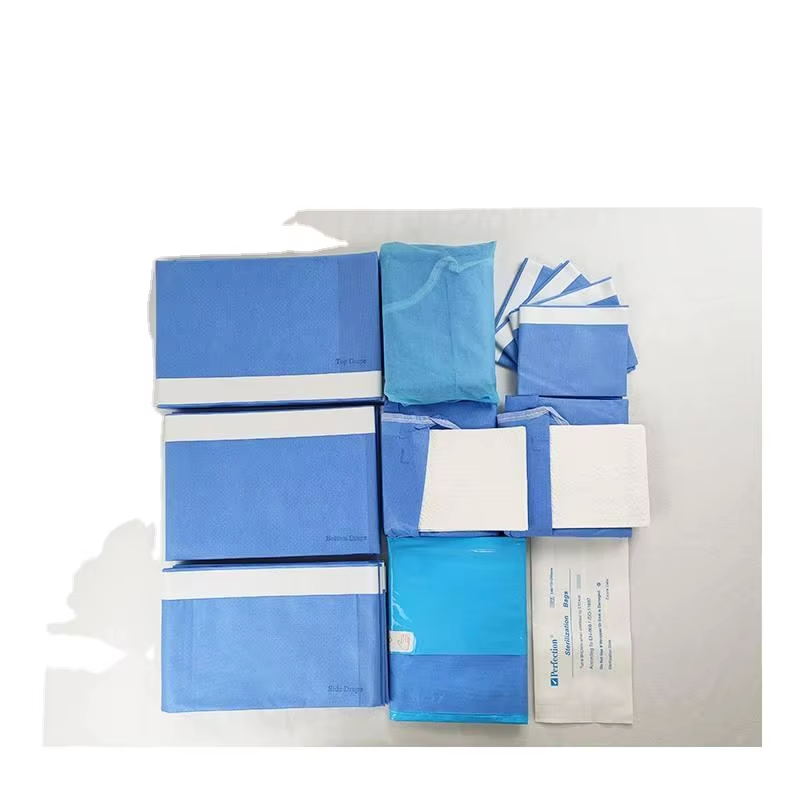Contact Info
200 meters east of Xihuang Village Committee, Linchi Town, Zouping City, Binzhou City, Shandong Province (China)
Medical facilities operate rapidly and have high rates and levels of risk amd return. During medical practices, the primary quality surgical instruments and medical supplies determine (in part) the level of patient safety, the ability to control infection, and the efficiency of available medical services. Some key qualities to consider to make the tools for the trade flexible and tear zone resistant. Supplies that hold more than these qualities allow ease of use to medical professionals while also protecting against being defenseless to cross-contamination. This guide will provide you with key considerations when determining which surgical supplies to purchase IN the context of the best practices combined with the best products that the marketplace offer.
What is meant by flexibility is the ability to stretch, bend, and fit within the required action the user is required to perform. An example is the surgical gowns and drapes that now and then the dr is covered in full, but during the long operation, he and the other nursing staff should be able to move around. Another factor is the resistance to rips and tears which is crucial to cross contamination. Not good materials would easily ruin the surgical supply. Quality surgical materials often possess these characteristics due to advanced techniques. One of such techniques is the needle punching and multiple layers of SMS. These techniques allow for the creation of supple and durable fabric that meets the high standards of surgical environments.

The balance of flexibility and resistance to tearing is essential in the material selection for Clinical/FIELD Supplies. For most surgical products, both polypropylene and polyester fabrics can be used. Aged water-resistant and lightweight polypropylene SMS fabrics (100% polypropylene SMS non-woven fabric) with spunbond-meltblown-spunbond construction is a perfect choice for polypropylene. While polyester fabrics, like the non-woven needle punched polyester, are better in tear resistance and are the selection of choice for appliques that are intended for heavy duty surgical. Also, the used of eco-friendly materials is a growing trend in the industry, as the provide sustainable and tailored materials with good construction performance. When it comes to the selection of surgical materials, those constructed of virgin materials with good certificates, like ISO13485, of international acceptance should be favoured.
To understand flexibility in surgical supplies, it is essential to look in the hands of those in the profession, in the practice of the trade, on the operating table. One performs surgical procedures wearing surgical gowns designed to allow complete, unrestricted bending, reaching, and lifting motions. In the exercise of the trade, the surgical gowns must not feel stiff. One of the opponents of stiffness is the softness of the disposable patient gowns and aprons. They need to retain their shape, but softness is essential. One must consider how thin the fabric is; ultra thin can be good for flexibility as long as it is designed to be non- tearable and engineered to include a non woven technology. One can also look if the supplies have been designed with ergonomic elastic cuffs in order to create a better fit and allow adjust closures for comfort and usability over a longer period of time in the surgical procedure.
The ability of surgical supplies to withstand tears is a very important safety feature that prevents surgical supplies from failing during usage. Manufacturers perform and monitor quality control to ensure their products meets standards of high levels of tear resistance. This may involve testing of uniforms to such criteria under pulling and friction to estimate real-world usage of the products. Rest surgical supplies that have been accredited and certified by professional authorities such as CE and this will guarantee that compliance is achieved in meticulous quality and safety standards of the supply. The construction of the fabric is very imperative as fabrics of 80 to 200gsm usually have a good mix of tear resistance and flexibility which makes them ideal of surgical usage in varying breadth of surgical procedures. Opting for supplies of proven tear resistance will help in minimizing inadvertent rips and ensure consistent protection in the course of the procedures.

Flexibility and tear resistance play a huge role in infection control during surgeries. A tear in a surgical gown or drape can lead to an infection, as bacteria and viruses can travel along the opening. This also increases the possibility of cross-contamination. Flexible supplies allow the wearer to move easily, which helps reduce the risks of having gaps or tears in the fabric. The non-woven materials in these supplies are a high quality fabric that can also offer barrier protection from fluids and microorganisms. Disposable surgical supplies, like gowns, pillows, and aprons, are also a sanitary solution because they do not require laundering, which also reduces the risk of infection. In surgeries, gown and drapes that offer easy movement, are tear resistant, flexible and offer protection from bacteria and fluids are extremely important in protecting the staff and patients.
When sourcing surgical supplies, don’t forget to evaluate the potential supplier just as thoroughly as you do the supplies themselves. Is the supplier a one-stop shop? Such suppliers will control more of the production process, and are thus more likely to provide consistent and reliable surgical supplies. Do they have overseas warehouses? Important for healthcare facilities to deliver and restock in a timely manner. Supplier responsiveness and innovation are also important, as a supplier with in-house design and development will be more likely to provide customized solutions for your surgical needs. Reputation can be reviewed through online customer testimonials. Forging partnerships with reputable suppliers will ensure the surgical supplies you need have the right flexibility and tear resistance with minimal risk.